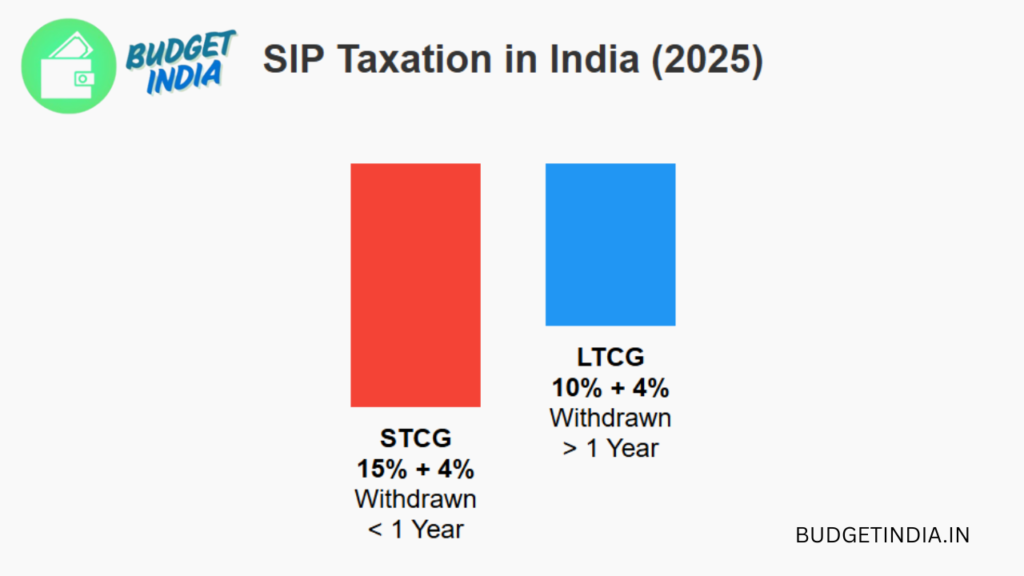Systematic Investment Plans (SIPs) are among the most straightforward and dependable methods for individuals to commence their investment journey. Perfect for those unfamiliar with stock markets, SIP Investment provide a methodical and low-barrier approach to investing. They allow periodic, small investments—generally monthly—removing the burden of lump-sum commitments and promoting financial discipline.
In 2025, as an increasing number of people seek intelligent investment avenues, SIPs continue to be a favored choice for beginners. This article highlights the most suitable SIP funds for newcomers and offers valuable guidance to help initiate your investment path.
- UNDERSTANDING SIP Investment
- Why SIP Investment Is Suitable for New Investors
- Top 10 SIP Investment Funds for Beginners in 2025
- 1. AXIS BLUECHIP FUND – DIRECT PLAN – GROWTH
- 2. MIRAE ASSET LARGE CAP FUND – DIRECT PLAN – GROWTH
- 3. PARAG PARIKH FLEXI CAP FUND – DIRECT PLAN – GROWTH
- 4. UTI NIFTY INDEX FUND – DIRECT PLAN – GROWTH
- 5. ICICI PRUDENTIAL BALANCED ADVANTAGE FUND – DIRECT PLAN – GROWTH
- 6. HDFC HYBRID EQUITY FUND – DIRECT PLAN – GROWTH
- 7. NIPPON INDIA SMALL CAP FUND – DIRECT PLAN – GROWTH
- 8. FRANKLIN TEMPLETON INDIA FLEXI CAP FUND – DIRECT PLAN – GROWTH
- 9. SBI BLUECHIP FUND – DIRECT PLAN – GROWTH
- 10. L&T EMERGING BUSINESS FUND – DIRECT PLAN – GROWTH
- How to Choose the Right SIP Investment Fund
- EFFECTIVE SIP PRACTICES FOR STARTERS
- SIP TAXATION EXPLAINED
- CONCLUSION
- FREQUENTLY ASKED QUESTIONS (FAQS)
UNDERSTANDING SIP Investment
A Systematic Investment Plan (SIP) allows an individual to allocate a fixed amount into a mutual fund at set intervals—typically monthly. Instead of deploying a lump sum, contributions are spread over time, lowering the risk related to market unpredictability.
SIPs take advantage of rupee cost averaging, purchasing more units when prices are low and fewer when they are high. This technique helps decrease the average investment cost and boosts long-term growth prospects. SIPs also reinforce a consistent savings habit.
Why SIP Investment Is Suitable for New Investors
For those starting their investment experience, SIPs offer various advantages:
- Affordable Entry: Begin with investments as little as ₹500 per month.
- Promotes Saving Habits: Encourages regular financial discipline.
- Minimizes Timing Risk: Distributes investments over different market phases.
- Compounding Growth: Regular investments compound to deliver significant returns over time.
- Diversified Portfolio: Access to a professionally curated asset mix.
Top 10 SIP Investment Funds for Beginners in 2025
Here are some top-rated mutual fund SIPs for new investors this year:
1. AXIS BLUECHIP FUND – DIRECT PLAN – GROWTH
- Category: Large Cap Equity Fund
- Best For: Cautious investors focused on long-term wealth creation
- 3-Year CAGR: Around 13%
- Reason to Choose: Invests in established blue-chip firms offering stability and reliable returns.
2. MIRAE ASSET LARGE CAP FUND – DIRECT PLAN – GROWTH
- Segment: Large Cap Fund
- Minimum SIP: ₹500
- 3-Year CAGR: Approximately 14%
- Core Benefit: Consistent performance through allocation in top-tier companies.
3. PARAG PARIKH FLEXI CAP FUND – DIRECT PLAN – GROWTH
- Type: Flexi Cap Fund
- Special Feature: Allocates funds in both Indian and international equities.
- Risk Classification: Moderate
- Recommended Because: A well-balanced approach for long-term investors starting out.
4. UTI NIFTY INDEX FUND – DIRECT PLAN – GROWTH
- Nature: Index Fund
- Benchmark: Nifty 50
- Ideal For Beginners: Tracks a prominent index, comes with minimal costs and simplified management.
5. ICICI PRUDENTIAL BALANCED ADVANTAGE FUND – DIRECT PLAN – GROWTH
- Class: Dynamic Asset Allocation Fund
- Target Group: Conservative investors
- Notable Feature: Dynamically adjusts equity and debt mix according to market dynamics.
6. HDFC HYBRID EQUITY FUND – DIRECT PLAN – GROWTH
- Classification: Aggressive Hybrid Fund
- Risk Level: Moderately High
- Suitable For: Individuals aiming to combine growth and safety by investing in both equity and debt.
7. NIPPON INDIA SMALL CAP FUND – DIRECT PLAN – GROWTH
- Fund Type: Small Cap Equity Fund
- Risk/Return Assessment: Higher volatility with the potential for greater rewards
- Advisory Note: Best suited for long-term investors who are comfortable with short-term fluctuations.
8. FRANKLIN TEMPLETON INDIA FLEXI CAP FUND – DIRECT PLAN – GROWTH
- Category: Flexi Cap Fund
- Best For: Investors seeking a well-diversified portfolio across market segments
- 3-Year CAGR: 11-12%
- Reason to Choose: Exposure to both large and mid/small cap stocks for balanced growth.
9. SBI BLUECHIP FUND – DIRECT PLAN – GROWTH
- Category: Large Cap Equity Fund
- Risk Level: Low to Moderate
- Minimum SIP: ₹500
- Core Benefit: Ideal for conservative investors wanting to invest in stable blue-chip stocks.
10. L&T EMERGING BUSINESS FUND – DIRECT PLAN – GROWTH
- Category: Mid Cap Fund
- Risk Level: Moderate to High
- 3-Year CAGR: Around 15%
- Reason to Choose: A good option for long-term investors willing to take moderate risk for higher returns.
How to Choose the Right SIP Investment Fund
To determine the most fitting SIP Investment , evaluate the following:
- Define Your Objectives: Clarify whether your aim is education, retirement, or capital growth.
- Understand Risk Tolerance: Select between equity-oriented, hybrid, or conservative schemes.
- Review Historical Data: Check fund consistency over the past 3–5 years.
- Assess Expense Ratios: Lower fees enhance your total returns.
- Favor Direct Plans: Avoid intermediary commissions and retain more profits.
EFFECTIVE SIP PRACTICES FOR STARTERS
Strengthen your SIP outcomes with these tips:
- Start Early, Stay Long: Early participation gives your money more time to grow.
- Be Consistent: Continue investing even in uncertain markets.
- Avoid Premature Redemptions: Let compounding work in your favor.
- Yearly Check-ups: Review fund results periodically.
- Increase SIP Gradually: Raise investment amounts as your earnings improve.
SIP TAXATION EXPLAINED
Being aware of taxation on SIP returns can help with effective planning:
- Equity Funds: Gains up to ₹1 lakh per financial year are exempt from tax. Excess gains attract 10% LTCG tax.
- Debt Funds: Short-term profits are taxed according to your income slab. Long-term capital gains (post 3 years) are taxed at 20% after indexation.
- Hybrid Funds: Tax implications depend on their equity composition.
Note: No tax is charged on SIP returns up to ₹1 lakh in a financial year under LTCG rules.

CONCLUSION
SIPs offer a simple, affordable, and growth-oriented path for beginner investors in 2025. Whether aiming for capital appreciation or a conservative mix of returns, the right SIP strategy can steadily help build financial security. Through consistent investments and thoughtful planning, even small monthly contributions can compound into substantial wealth.
FREQUENTLY ASKED QUESTIONS (FAQS)
What is the minimum SIP’s contribution in 2025?
Most mutual funds let you begin with ₹500 per month.
Are SIPs a secure option for first-time investors?
Though subject to market risks, SIPs in stable categories like large-cap or hybrid funds are relatively safer for beginners.
Can SIPs be terminated anytime?
Yes, SIPs are flexible—you can pause or cancel them without penalties.
What is the optimal duration for a SIP?
A minimum of five years is advisable to fully benefit from compounding effects.
Which SIP is ideal for conservative starters?
Options like ICICI Balanced Advantage Fund and Axis Bluechip Fund suit investors with lower risk tolerance.






Leave a Reply